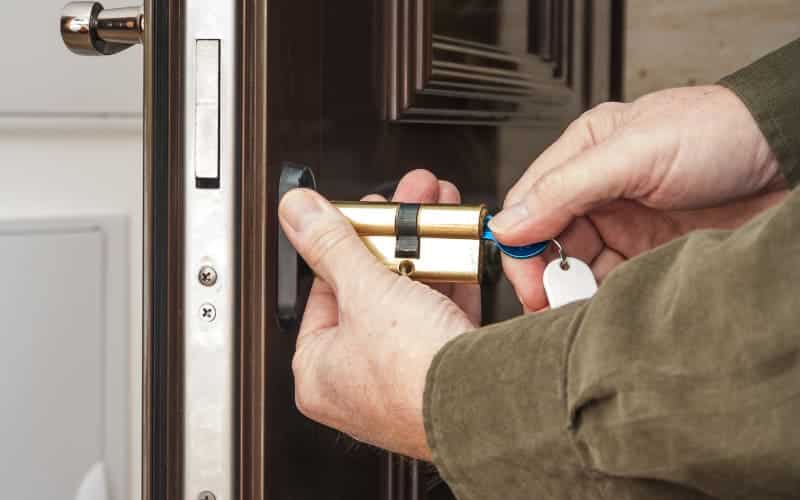As a homeowner, one of the essential pieces of hardware that you need to have is a reliable door lock cylinder. This small but critical component is responsible for keeping your door locked securely, preventing unauthorized entry into your home or property.

In this blog post, we'll give you a comprehensive guide to cylinder locks, including what they are, how they work, and the different types that are available. We'll also provide you with some valuable tips on how you can choose the right door lock cylinder for your specific needs.
What is a Door Lock Cylinder?
A door lock cylinder is a type of lock that is installed on the outside of a door, typically on the handle or knob. It is a cylindrical device that contains the locking mechanism, which is operated by a key that slides into the cylinder's keyway.
Once the key is inserted into the keyway, it will interact with a series of pins, tumblers, or discs inside the cylinder to unlock the door. Some door lock cylinders come with a thumb-turn knob on the inside, which allows you to lock and unlock the door without a key.
How Does a Door Lock Cylinder Work?
The majority of modern door lock cylinders work on the same basic principle. The key is inserted into the keyway, which causes the cylinder to rotate. As the cylinder rotates, it moves a cam, which then operates the locking mechanism to either lock or unlock the door.
Most door lock cylinders contain a series of pins or tumblers, which align with the key when it is inserted into the keyway. When the key is turned, the pins or tumblers are lifted to a specific height, allowing the cylinder to rotate freely.
Once the cylinder has rotated enough, the cam inside the lock will engage with the bolt or latch and either lock or unlock the door. Some lock cylinders use a disc mechanism instead of pins or tumblers, but the operating principle is essentially the same.
Types of Door Lock Cylinders
There are a few different types of door lock cylinders available, each with their own unique features and benefits. Here are some of the most common types of door lock cylinders:
Single Cylinder Lock: This type of cylinder lock is the most common and consists of a single cylinder that is operated by a key on the outside and a thumb-turn on the inside.
Double Cylinder Lock: This type of cylinder lock is similar to a single cylinder lock, but it requires a key to unlock the door from both the inside and outside. Double cylinder locks are typically used on doors with glass panes or in areas where there is a risk of someone reaching through the door to turn the thumb-turn knob.
Deadbolt Cylinder Lock: A deadbolt cylinder lock is a type of lock that is only used on the door's deadbolt. It provides additional security and is typically used on entry doors.
Mortise Cylinder Lock: A mortise cylinder lock is a type of cylinder lock that is installed in a mortise lock. This type of lock is commonly used on commercial buildings and provides a higher level of security than other cylinder locks.
Tips for Choosing the Right Door Lock Cylinder
When you're choosing a door lock cylinder, here are a few things you should keep in mind:
Consider the level of security you need: Different types of door lock cylinders provide varying levels of security. If you're looking for a high level of security, consider a deadbolt or mortise cylinder lock.
Look at the brand reputation: Choose a door lock cylinder from a reputable brand with a proven track record of reliability and quality.
Choose the right size: Make sure you choose a door lock cylinder that fits your door's thickness and the size of the existing hole.
Conclusion
A door lock cylinder is an essential component of your home's security system. By understanding the different types of cylinders available and considering your specific needs, you can choose the right door lock cylinder to keep your home safe and secure. By keeping the above tips in mind, you can be confident in your choice and ensure your home is protected.